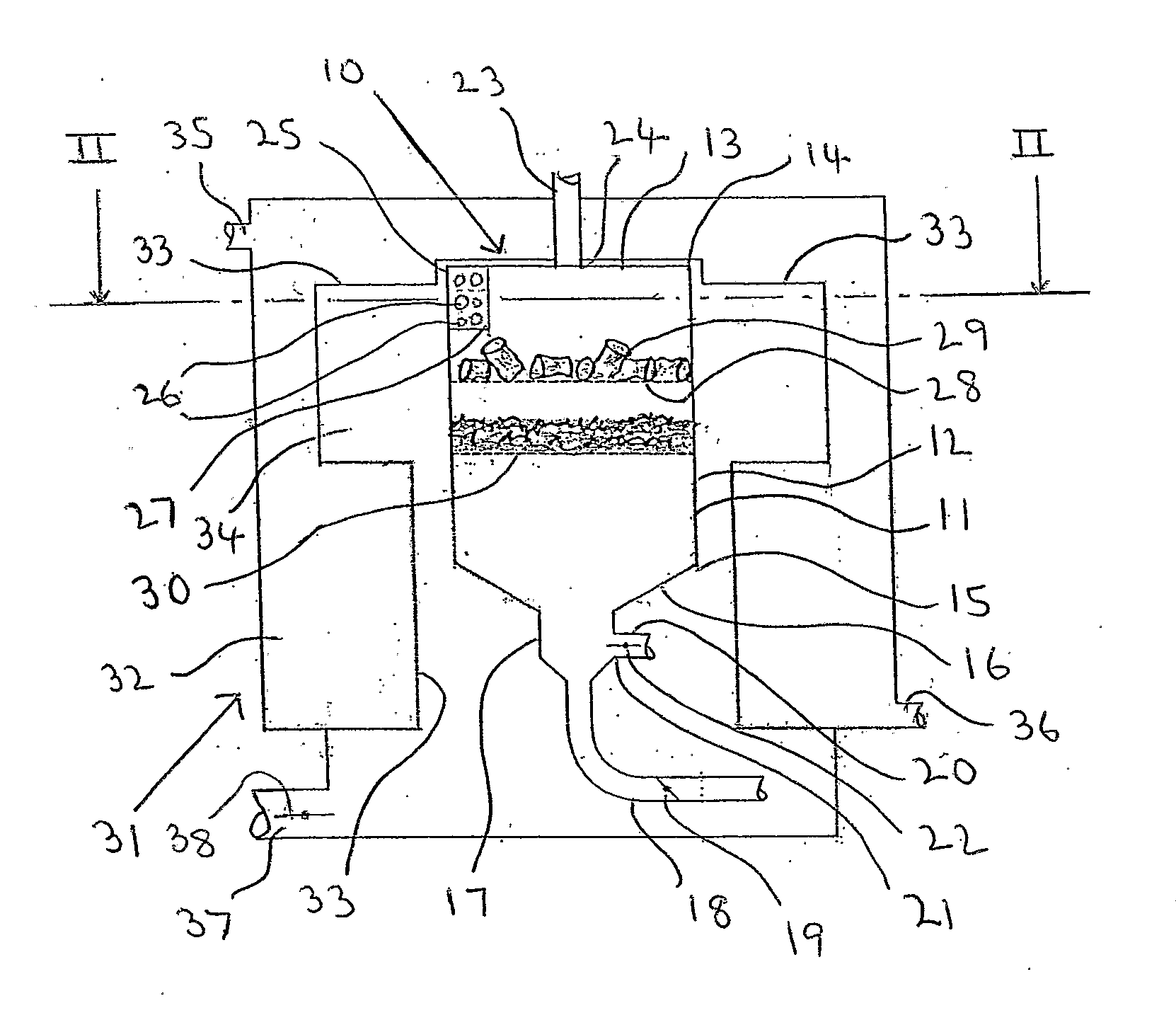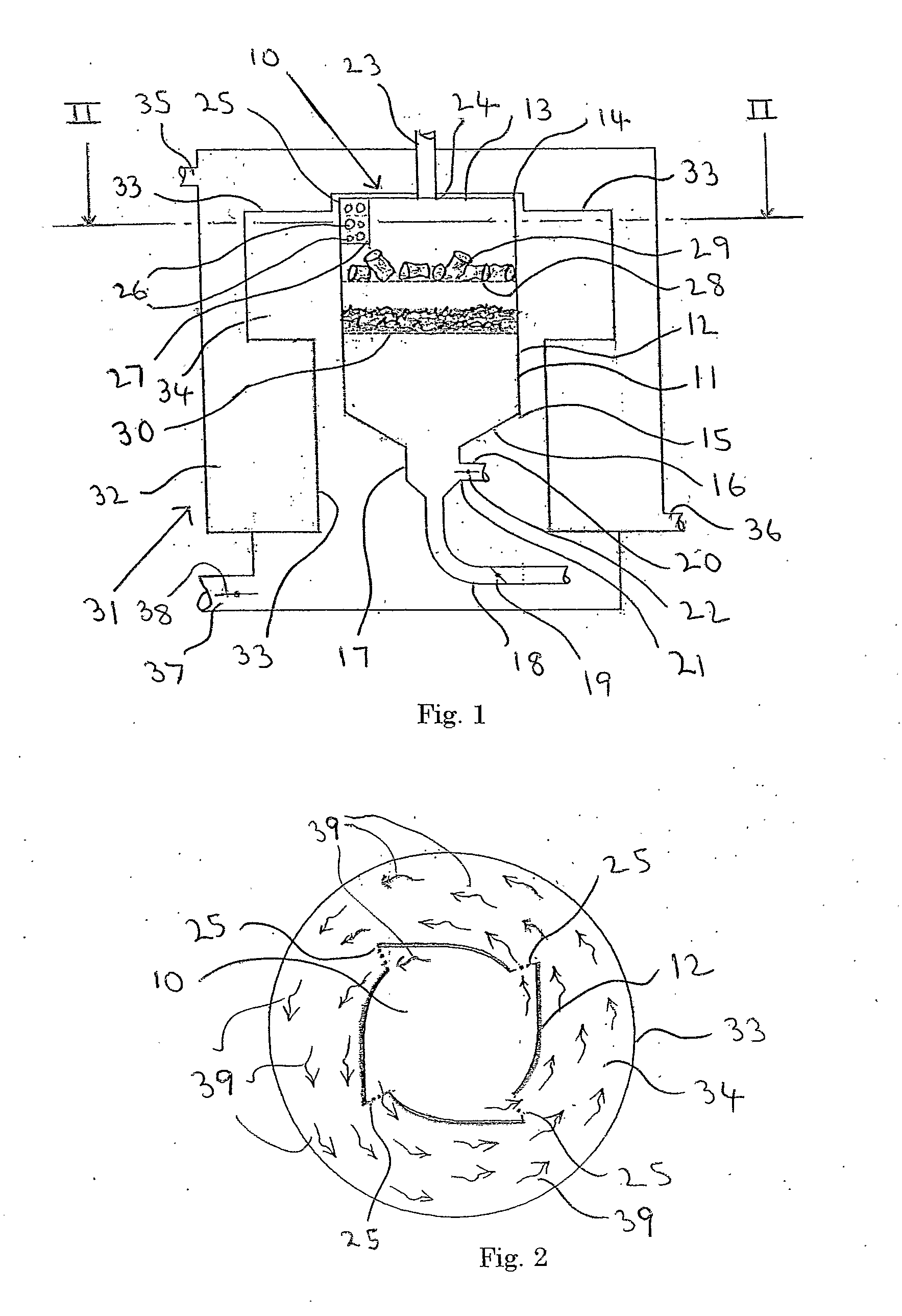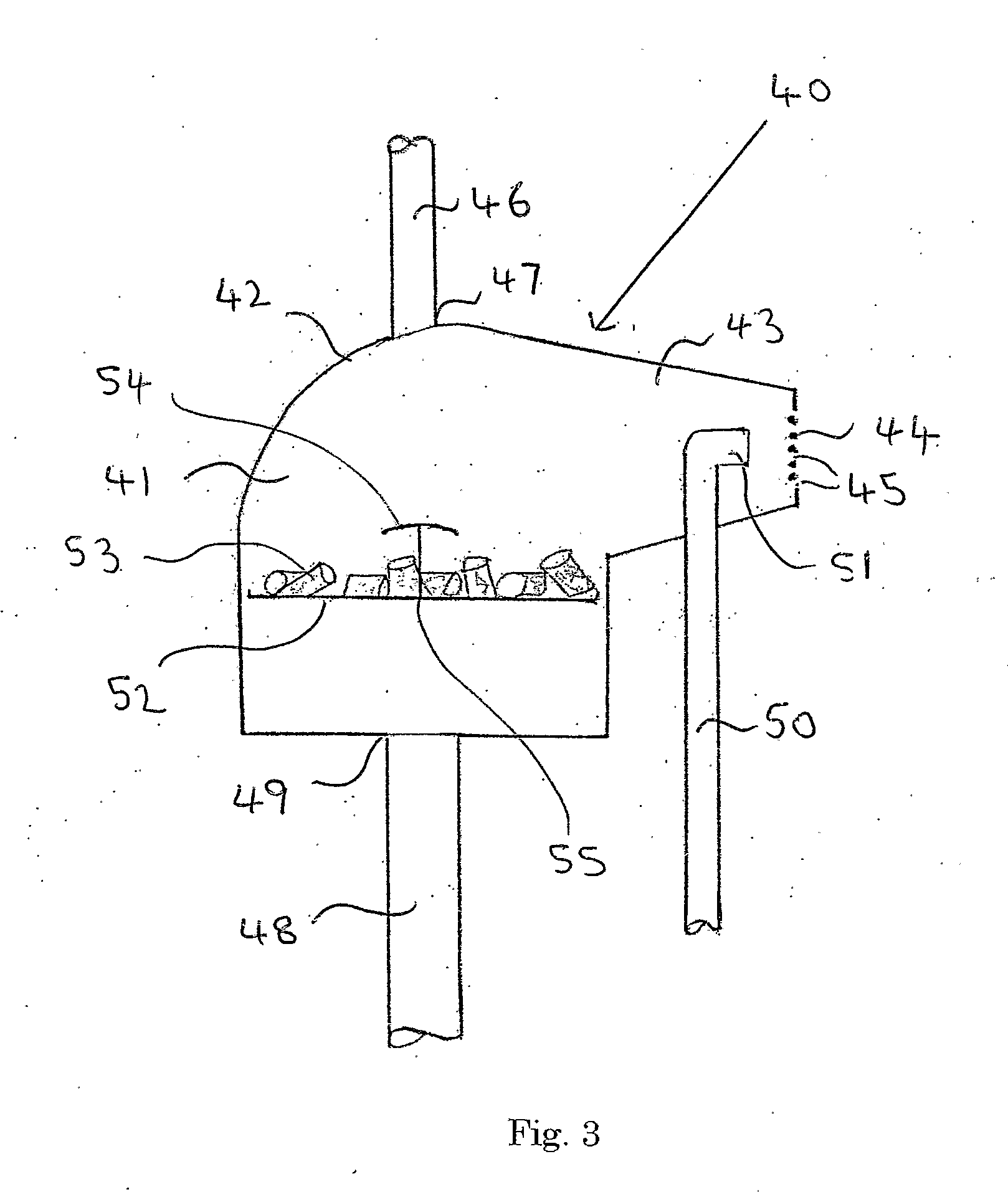Combustion Chamber for Burning Solid Fuels
a combustion chamber and solid fuel technology, applied in the direction of solid fuel combustion, combustion types, lighting and heating apparatus, etc., can solve the problems of inconvenient use in comparison with oil or gas burning devices, inefficient burning of cord wood in conventional combustion chambers, and slowing down the increase of carbon dioxide levels in the atmospher
- Summary
- Abstract
- Description
- Claims
- Application Information
AI Technical Summary
Benefits of technology
Problems solved by technology
Method used
Image
Examples
second embodiment
[0061]Referring to FIG. 3 there is illustrated, generally at 40, a combustion chamber in accordance with the invention. The combustion chamber 40 is designed to burn wood pellets and to provide a blown flame and is suitable for use as a replacement for an oil burner in an oil-fired heating boiler.
[0062]The combustion chamber 40 has an enclosed hollow body 41, which has a generally circular cross-section and a domed top section 42.
[0063]A frusto-conical section 43 extends laterally from the top section 42 and terminates in a volatiles outlet 44 having a plurality of apertures 45. A fuel inlet 46 is located at point 47 on the top section 42 and a primary air inlet 48 is located at point 49 on the body section 41.
[0064]A secondary air inlet 50 is mounted in the frusto-conical section 43 and is positioned such that a secondary air nozzle 51 is located, within the hollow body 41, adjacent the volatiles outlet 44.
[0065]A grate 52 is mounted within the hollow body 41 and supports the wood ...
third embodiment
[0067]Referring to FIG. 4 there illustrated generally at 60, a combustion chamber in accordance with the invention, the combustion chamber 60 having an enclosed hollow body 61, which is generally circular in cross-section. The hollow body 61 has a cylindrical wall section 62 and a top section 63 at end 64 of the cylindrical section 62.
[0068]A volatiles outlet 65 is mounted in the top section 63 and has a plurality of apertures 66 therein. A pipe 67 passes through a central opening 68 in the top section 63. The pipe 67 serves as a fuel inlet 69 and a secondary air inlet 70.
[0069]A grate 71 is mounted within the hollow body 6 land supports the wood pellets 72 to be burnt.
[0070]A primary air inlet 73 is mounted at the bottom end 74 of the hollow body 61.
[0071]In the embodiment illustrated the combustion chamber 60 forms part of a fire chamber, shown generally at 75, in accordance with the invention. The fire chamber 75 has a water jacket 76 having an inner heat transferring surface 77 ...
PUM
 Login to View More
Login to View More Abstract
Description
Claims
Application Information
 Login to View More
Login to View More - R&D
- Intellectual Property
- Life Sciences
- Materials
- Tech Scout
- Unparalleled Data Quality
- Higher Quality Content
- 60% Fewer Hallucinations
Browse by: Latest US Patents, China's latest patents, Technical Efficacy Thesaurus, Application Domain, Technology Topic, Popular Technical Reports.
© 2025 PatSnap. All rights reserved.Legal|Privacy policy|Modern Slavery Act Transparency Statement|Sitemap|About US| Contact US: help@patsnap.com



